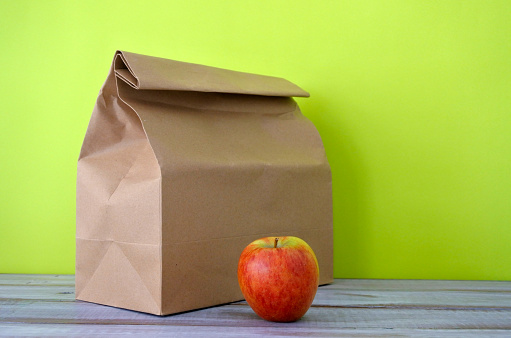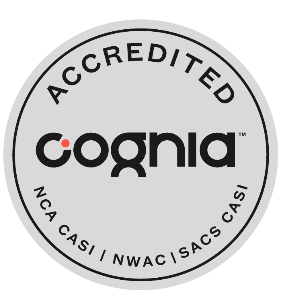Everyone has a Role in Preventing the Spread of COVID-19
Students Should
- Tell their parents or teacher if they feel sick or have symptoms of COVID-19.
- Stay home from school and other activities if they feel sick or test positive for COVID-19
Parents Should
- Check for symptoms of illness every day before school. If their child has a temperature of 100.4º F (38º C) or higher, the child has a fever and should stay home from school.
- Keep their child home from school if they feel sick or have symptoms of COVID-19.
- Before school starts, tell the school if their child has a health condition that puts them at higher risk for severe illness from COVID-19.
- Review and update their child’s plans (Individual Healthcare Plan, Individualized Education Plan, 504 plan) with the school.
- Review and update personal and emergency contact information with the school.
School Faculty and Staff Should
- Stay home from school or work if they feel sick or have symptoms of COVID-19.
- Follow the isolation guidance from the school nurse and health department if they test positive for COVID-19.
- Follow the quarantine guidance if they are exposed to someone with COVID-19.
School Administrators Should
- Make sure all teachers, employees, and the school nurse understand privacy laws and how these laws relate to any information the school is given by the health department. This includes privacy laws that protect students, teachers, and employees.
- Provide a safe learning environment for students, teachers, and employees. This includes considering their emotional and social needs.
- Review plans (Individual Healthcare Plan, Individualized Education Plan, 504 plan) for students with special healthcare needs with the student’s parents.
School Nurse Should
- Work with the local health department and school administration to identify students, teachers, and employees who have tested positive for or been exposed to COVID-19.
- Understand privacy laws and how these laws relate to any information the school is given by the health department. Protect the privacy of the student, teacher, or employee who tests positive or is exposed to someone with COVID-19 as much as possible.
- Notify the parents of students, eligible students, teachers, and employees if they have been exposed to someone with COVID-19 in school. Provide guidance on quarantine options, checking for symptoms, and when to get tested.
- Work with school administration to prevent the spread of COVID-19 in the school.
Everyone Should
- Wash their hands with soap and water often.
Face Masks
![]()
Mask Requirement at School
Per a new health order by the Salt Lake County Health Department, face masks are required in public schools for 30 days starting Saturday, Jan. 8, 2022. The order, which has been endorsed by the Salt Lake County Council, extends to all indoor public places (and while queueing outdoors), including public schools. It applies to all county residents regardless of their vaccination status or previous COVID-19 infections, and will be in place for 30 days, or through Monday, Feb. 7, 2022.
Exemptions to the order include:
- Individuals under two years of age and those with medical conditions, impairments or disabilities that prevent wearing a mask.
- Individuals engaging in work where they are alone and individuals for whom wearing a mask would create a risk to the individual related to their work as determined by local, state or federal regulators or workplace safety guidelines.
- When communicating with an individual who is deaf or hard of hearing if: communication cannot be achieved through other means, and the speaker wears a face shield or uses alternative protection such as a plexiglass barrier.
- While obtaining or providing a service that requires the temporary removal of the respirator, mask, or face covering, such as speech therapy services.
- While actively practicing or playing a competitive, recreational, or professional sport.
- While giving an educational, artistic, cultural, musical, or theatrical presentation or performance for an audience.
- While exercising or engaging in athletic training while indoors and maintaining at least six feet of physical distance from any other individual, and while swimming or on duty as a lifeguard.
Testing for COVID-19
Anyone who has symptoms of COVID-19 should stay home and get tested. You should not attend school or participate in extracurricular activities if you have symptoms of COVID-19. Isolate at home, call a healthcare provider, and get tested for COVID-19 right away, even if your symptoms are mild. Symptoms of COVID-19 may look like other common illnesses, such as strep throat, colds, flu, or allergies
What Information can a School Disclose when Someone in the School Tests Positive?
A school may disclose that someone at the school tested positive for COVID-19, as long as the facts alone or in combination with other information released, do not identify the person. The school may not publicly release the personal health information of any student, such as the student’s name or whether they tested positive for COVID-19. The school may not publicly release the name of an employee who tests positive for COVID-19.
Isolate at home if you test positive for COVID-19
![]()
Under Utah Department of Health guidance effective Monday, Jan. 3, 2022, you should isolate right away for 5 days after the date you test positive for COVID-19. You must isolate even if you are fully vaccinated, have received a booster shot, or are not showing symptoms. This means to stay home except to get medical care. You should not go to school, work, church, group gatherings, or extracurricular activities.
It’s also recommended that you: wear a mask around others for the 5 days after the time you were isolating in your home; and get COVID-19 test before returning to work or school to make sure you are no longer spreading the virus.
You are infectious and can spread the virus to others starting up to 2 days before you first had symptoms and until your isolation period is over. If you never had symptoms, you are infectious for 2 days before the day you were tested for COVID-19.
Close Contact Exposures
People who have been in close contact with someone who tests positive for COVID-19 are at an increased risk of getting infected and infecting others. Close contact means someone was closer than 6 feet or 2 meters (about 2 arm lengths) to a person who has COVID-19 for 15 minutes or longer in a 24 hour period while they were infectious. Contact tracing is how public health workers find the close contacts of someone who has COVID-19.
Contact Tracing Protocol in Schools
The school nurse works with the health department on contact tracing. Students, parents, teachers, and employees will be notified if they were exposed to COVID-19 at school. People who are tested for COVID-19 will get their test results from the healthcare provider or testing location where their sample was collected.
- The health department will call anyone who tests positive for COVID-19. It may take a few days for the health department to call the person who tested positive. They will ask the person who he or she may have been in close contact with up to 2 days before he or she got sick or tested positive.
- The health department will notify the school nurse if a student, teacher, or employee who works in the school or with students tests positive for COVID-19. The health department gives the name of the person who tested positive and the date of last exposure to the school nurse. If a parent calls to notify the school that their child has been tested or tested positive, the school nurse will confirm the test result with the health department before notifying close contacts of possible exposure.
- Students, parents, teachers, and employees will be notified if they may have been exposed to a person who tested positive. Quarantine information and guidance on how to check for symptoms, and when to consider testing, will be provided.
- Only students, teachers, or employees who came into close contact with the person who tested positive will be notified of a possible exposure.
Contact Tracing Flow Chart
- COVID-19 Confirmed?
- YES
Contact Tracing: School Nurse investigates case, seating charts, classroom, close contacts for exposures.
- NO
School Nurse requests verification from the health department to confirm the positive.
- Close Contacts
- Students
- Identification: School Nurse compiles a list of close contact exposures who are unvaccinated and have not had COVID in the past 90 days.
- Documentation: School Nurse ensures documentation of positive cases on health department dashboard.
- Communication: School Nurse communicates return from isolation date with office for attendance, teacher, and school administration
- Follow-up as needed.
- Employees
- Identification: School Nurse contacts employees who have been exposed to determine vaccination status, history, and provide guidance
- Documentation: School Nurse notifies the School Nurse Specialist of positive employees and ensures documentation on health department dashboard
Quarantine Following an Exposure to Someone Who Tests Positive for COVID-19
The best ways to stop diseases from spreading in schools or throughout our communities are for everyone to be vaccinated and for those who have the disease ⏤ or have been exposed to the disease ⏤ to quarantine or isolate at home until they can no longer get other people sick.
FOR STUDENTS (younger than 18)
- If you have gotten two doses of Pfizer of Moderna:
- You don’t need to quarantine at home and can continue to go to school, work, and participate in activities outside your house.
- It’s recommended, however, that you wear a mask for 10 days after exposure and that you get tested 5 days after you are exposed to make sure you are not positive and possibly spreading the virus to others.
- If you are not fully vaccinated (two doses of Pfizer or Moderna):
- You should stay at home for 5 days after you are exposed.
- You can go to school and work and participate in public activities after 5 days as long as you don’t have symptoms.
- You should wear a mask for 10 days after exposure and get tested 5 days after you are exposed to make sure you are not positive and possibly spreading the virus to others.
FOR EMPLOYEES (18 years or older)
- If you got a booster dose or got a second dose of the Pfizer of Moderna vaccine within the last 6 months, or got a J&J vaccine within the last 2 months:
- You don’t have to quarantine. You can go to work and participate in activities outside your house.
- You should, however, wear a mask for 10 days after your exposure.
- It’s also recommended that you get tested 5 days after you are exposed to make sure you are not positive and possibly spreading the virus to others.
- If you are unvaccinated or have not gotten a booster dose, or a second dose of the Pfizer of Moderna vaccine within the last 6 months, or got a J&J vaccine within the last 2 months:
- You should stay at home for 5 days from the day you were exposed to COVID-19.
- You can leave your house after 5 days as long as you don’t have any symptoms, but should wear a mask in public for another 5 days (10 days after exposure).
- It’s also recommended that you get tested 5 days after you are exposed to make sure you are not positive and possibly spreading the virus to others.
Healthy Hygiene Procedures
Wash hands for 20 seconds with soap and water: ![]()
- After you blow your nose, cough, or sneeze.
- After you use the restroom.
- Before you make or eat food.
- Before and after you care for another person who needs help.
- Before and after you take breaks at work.
- After you put on, touch, or take off a cloth face covering or masks.
If you do not have soap and water, you can use school-provided, foaming sanitizer.
Avoid touching your eyes, nose, or mouth with unwashed hands. Try not to touch surfaces many people touch. Avoid shaking hands or touching other people. Use other ways to greet people without touching.
Ventilation
Improving ventilation is an important COVID-19 prevention strategy that can reduce the number of virus particles in the air.
Cleaning and Disinfection
Cleaning, sanitizing, and disinfecting prevent the spread of COVID-19. Clean and disinfect surfaces every day that are touched frequently.
Physical distancing and cohorting
Schools should implement physical distancing as much as possible to protect children who are too young to be vaccinated. This means to stay at least 6 feet away from other people who are not vaccinated as much as possible. However, studies showed physical distancing of 3 feet in a classroom can be effective when other prevention measures are taken, including mask wearing.
Cohorting (or forming “pods”) can also help reduce the chance of being exposed to COVID-19, especially when it’s hard to maintain physical distance in the classroom. Cohorting keeps groups of students, and sometimes teachers or employees, together throughout the school day. Schools are responsible for making sure cohorting is done in an equitable manner.
Student Symptom Checker
Document all health and injury related visits in the electronic Health Log.
- Is the student experiencing any of these symptoms?
- Temperature of 100.4 or greater
- Cough unrelated to asthma
- Shortness of breath/difficulty breathing
- Sore throat
- Loss of taste/smell
- Muscle or body aches/pain
- Chills
- Nausea/Vomiting
- Diarrhea
- YES
- Assist with any immediate needs
- Consult with School Nurse
- Notify parent/guardian to pick up student as appropriate per Canyons School District Health Guidelines
- Disinfect room
- Document all student illness or injuries in the electronic health log
- NO
Take temperature. If less than 100.4, offer water and allow to rest for 15-20 minutes in the health room.
Feeling better?
- Yes: Back to class.
- No: Consult with your School Nurse. Then, notify parent/guardian and send home as needed.
- CALL 911 and School Nurse If:
- Difficulty breathing
- Chest pain, CPR/AED
- New confusion
- Inability to wake or stay awake
- Bluish lips or face
- Illness Prevention
- Hand hygiene before and after each student interaction (soap & water or hand sanitizer).
- Use paper bed liner and change after each student.
- Clean the Health Room after each student.
- Take temperature of all students with symptoms of illness.
Canyons School District Health Guidelines
Click on a condition to expand the exclusion/non-exclusion criteria.
Students need to remain home if they feel unwell, have an excessive runny nose, excessive coughing, excessive sore throat, difficulty breathing, or are unable to participate in routine school activities.
Exclude until fever free for 24 hours, respiratory symptoms have improved for 24 hours, and it has been at least 10 days since symptoms began, or 10 days since test date if asymptomatic.
(increased number of loose, watery stools compared with the child’s normal pattern)
Students need to remain home until symptom free for 24 hours or their healthcare provider has cleared them to return to school.
Exclude student if unable to actively participate in routine school activities. Student may return once symptoms resolve.
- Student will be excluded for a temperature of 100.4 degrees F or greater.
- Student may return to school when they have been fever free (less than 100.4 degrees F) without using fever reducing medication for at least 24 hours.
- Exclude from school and notify parents and healthcare provider if sudden severe headache with vomiting or stiff neck that might indicate meningitis.
- No exclusion for common headaches as long as it does not compromise their ability to participate in school activities.
Exclude if the student feels unwell, has a fever, or is unable to participate in school activities. Student may return when they are fever free for 24 hours without using fever reducing medications.
- Exclude: Purulent Conjunctivitis defined as pink or red eye with white or yellow discharge, often with matted eyelashes, eye pain, or redness of the eyelids or skin around the eye.
- No exclusion: Non-Purulent Conjunctivitis defined as pink eye with a clear, watery eye discharge without fever, eye pain, or eyelid redness.
Follow fever exclusion guidelines. Student may return after a healthcare provider determines the illness is not a communicable disease.
No exclusion required if covered and/or health care provider confirms the sore is non-infectious. Student may return when the lesion can be covered or is deemed non-infectious by a healthcare provider.
Positive strep cases will be excluded from school until the student has received 12 hours of antibiotic treatment, feels well enough to participate in school activities, and is fever free.
Student should stay home if they are in severe pain, doubled over, crying, screaming, abdominal injury, diarrhea, vomiting, looks and acts ill. Student may return when symptoms resolve. Severe abdominal pain should be evaluated by a healthcare provider.
Exclude. Student may return to school when symptom free for 24 hours.
State legislation that impacts the 2021-2022 school year
There are several state laws that impact how LEAs (school districts), and health departments respond to COVID-19 during the upcoming school year. A brief summary of these laws is provided below. There may be other local, state, or federal laws and regulations that impact schools during the pandemic. Local officials should consult with their own legal counsel for advice on how these or other laws and regulations impact strategies to prevent COVID-19 in K-12 schools.
Senate Bill 107
- All schools in Utah are required to have at least 4 days of in-person instruction per week.
- Test to Stay is required in K-12 schools. Testing events should be done in coordination with the local health department and are required to take place when a certain number of students test positive for COVID-19 in a 14-day window. Schools can request assistance from the Utah Department of Health for Test-to-Stay events.
Senate Bill 195
- The Governor and Utah Department of Health must provide 24-hour notice to the Legislature before declaring a Public Health Emergency or issuing an Order of Constraint. An example of an Order of Constraint includes requiring masks to be worn by all students in schools.
- A local health department must provide 24-hour notice to their county elected officials before declaring a Public Health Emergency or issuing an Order of Constraint.
- The Legislature or elected county officials may overturn a Public Health Emergency or Order of Constraint at any time.
- There is a 30-day maximum time limit on an initial Public Health Emergency or Order of Constraint. The Legislature or elected county officials must be provided 10 days notice if the DOH or LHD requests an extension of a Public Health Emergency or Order of Constraint.
- All new Public Health Emergencies and Orders of Constraint must follow the requirements of Senate Bill 195.
House Bill 1007
- Does not allow a local education agency (school district), an LEA governing board, the state board, the state superintendent, or a school to require face masks to attend or participate in in-person instruction, LEA-sponsored athletics, LEA-sponsored extracurricular activities, or to be in any other place on the campus of a school or school facility.
- Does allow for a private school to require face masks.
- Does not allow an institution of higher education (like a college or university) to require a face covering to participate in or attend instruction, activities, or to be in any other place on the campus, except for a medical setting at an institution of higher education.
House Bill 308
- A governmental entity can’t require a person to get a COVID-19 vaccine that was authorized for use under Emergency Use Authorization as a condition of employment, or to participate or attend an activity of the governmental entity.
- This restriction would not apply to a COVID-19 vaccine that receives full authorization from the FDA.
- Employees who work in a public health or medical setting can be required to receive COVID-19 vaccines authorized for use under Emergency Use Authorization.
Senate Bill 1001
- Does not allow funding appropriated by the Legislature to be used for financial incentives, awards, drawings or prizes, or any similar incentive to anyone for receiving a vaccination.









